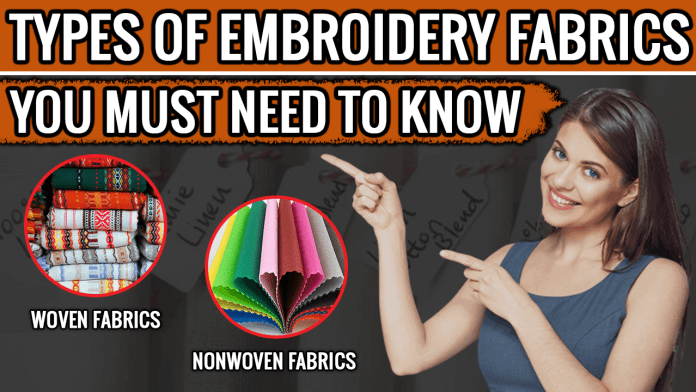Introduction
Embroidery digitizing has revolutionized the way we create intricate and beautifully detailed designs on fabrics. With the advancement of technology, embroidery digitizing services have gained immense popularity, offering a seamless and efficient way to translate intricate artwork into stunning embroidered pieces. However, one of the key aspects of successful embroidery digitizing is the choice of fabric. In this blog, we will explore the various types of embroidery digitizing fabric you must know to achieve impeccable results.
1. Cotton Fabric:
Cotton is a versatile and widely used fabric for embroidery digitizing. Its smooth texture and natural fibers make it an ideal canvas for intricate designs. Cotton fabric can be used for a variety of projects, from clothing to home decor items. It provides a stable base for the embroidery process, allowing the stitches to hold well and showcase the design’s details.
2. Linen Fabric:
Linen is another popular choice for digitizing services due to its durability and unique texture. The crisp and slightly rough surface of linen adds an artistic touch to the embroidery, giving it a vintage and rustic charm. Linen fabric works well for both traditional and contemporary designs, making it a favorite among embroiderers.
3. Silk Fabric
For a touch of elegance and luxury, silk fabric is an excellent option for embroidery digitizing. Silk’s smooth and lustrous surface lends itself beautifully to intricate designs, creating a stunning contrast between the fabric’s sheen and the embroidered thread. Silk embroidery is often used for formalwear, bridal attire, and high-end fashion pieces.
4. Wool Fabric:
Wool fabric is a great choice for embroidery digitizing projects that require texture and depth. The soft and cozy feel of wool complements various designs, especially those with a more tactile and three-dimensional aspect. Wool is commonly used for embellishing winter clothing, scarves, and accessories.
5. Synthetic Fabrics:
Synthetic fabrics like polyester and nylon offer their own set of benefits for embroidery digitizing. They are known for their durability, resistance to wrinkles, and vibrant color retention. These fabrics are often used for sports uniforms, outdoor gear, and items that require frequent washing. However, it’s important to note that the texture of synthetic fabrics may not be as pronounced as natural fibers.
6. Denim Fabric:
Denim is a sturdy and rugged fabric that adds a casual and trendy vibe. To embroidered designs. Denim embroidery digitizing is popular for creating personalized jeans, jackets, and bags. The dense weave of denim ensures that the embroidered elements stay securely in place, even after repeated use.
7. Velvet Fabric:
For a touch of opulence and luxury, velvet fabric is an intriguing choice for embroidery digitizing. Thus the soft and plush surface of velvet creates a rich contrast with the embroidered threads, resulting in a tactile and visually stunning design. So Velvet embroidery is often seen on formal garments, home decor accents, and accessories.
8. Canvas Fabric:
Canvas is a heavy-duty fabric that offers a sturdy foundation for embroidery digitizing. So it is commonly used for creating embroidered wall art, tote bags, and outdoor cushions. The coarse texture of canvas allows for bold and impactful designs that stand out.
Conclusion:
Embroidery digitizing has opened up a world of creative possibilities, allowing us to transform fabrics into works of art. The choice of fabric plays a crucial role in the success of an embroidery project, influencing the overall look, feel, and durability of the design. Whether you opt for the smooth elegance of silk, the rustic charm of linen, or the rugged appeal of denim, each fabric brings its own unique qualities to the embroidery digitizing process.
As you embark on your digitizing journey. Thus take the time to explore and experiment with different types of fabrics. Consider the design’s intricacy, the intended use of the embroidered piece, and the desired visual and tactile effects. So Bb choosing the right fabric, you can ensure that your embroidery digitizing projects turn out beautifully and leave a lasting impression. So, let your creativity flourish and bring your designs to life with the perfect fabric for your digitizing endeavors.
